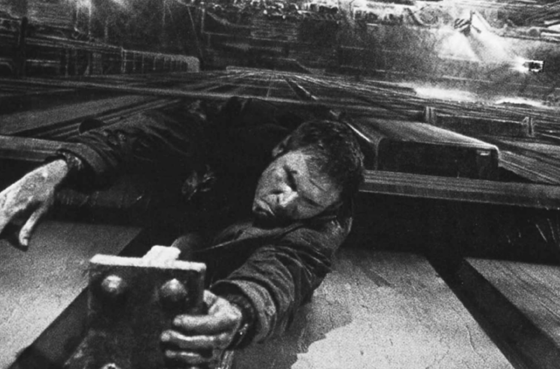In the science fiction city boundaries and borders are everything. Hierarchies of power and control are marshalled out of one’s spatial positioning so that where you live – how high or low or whether you are on the ‘inside’ or the ‘outside’ of the metropolis grid – how you live – exotic, nostalgic, cheap, stylish – and who (if anybody) you live with or next to is a key determinant of your social position, racial and class background. If you live too low in the science fiction city, or in the wrong neighbourhood, or you live alone or with somebody you love desperately, or you live next to the meat shop and the late-night tech-noir, then you are ticketed and docketed as Other, and all narrative events emanate from this social ‘fact’
Vivian Sobchack argues that ‘the science fiction film’s spatial articulations provide the literal premises for the possibilities and trajectory of narrative action’. The city space is considered to be a ‘specific power’ that can ‘affect both people and materials – a power that modifies the relations between them’. Sobchack goes on to examine the changing nature of this specific power in science fiction film. In the 1930s ‘utopian impulses represent the city as eternal ideal’. In the 1950s the city is about dissolution and destruction, and is either razed to the ground or encountered as empty or barren. In the 1960s and 1970s the city becomes a symbol for ‘lowering oppressiveness and overcrowdedness’, haunted by the then-contemporary fears about over-population, food shortages and an ageing population. And in the 1980s onwards, the city is totally exhausted, ‘groundless in both time and space’, and ‘totally resigned to its ruination’.
Eric Avila also examines a particular period of what he calls urban science fiction cinema – the 1950s. But instead of seeing a collectivised sense of dissolution and destruction being represented in the structures and mise-en-scène of the city, he sees the expression of ‘white flight’ and the fear of the racialised Other. Avila argues that ‘the urban science fiction film provided a cultural arena where suburban America could measure its whiteness against the image of alien Other’. Providing a close textual analysis of War of the Worlds and Them!, he goes on to suggest that ‘mainstream white audiences may have viewed the movement of blacks and other racialised minorities into cities as not so much a migration, but rather an invasion of what had been previously white space’.
Wong Kin Yuen examines the importance of Hong Kong’s cityscape to cyper-punk cinema, suggesting that it provides the model city ‘for the sf genre of ‘future noir’’. Yuen takes two case studies in his essay – Blade Runner and Ghost in the Shell – and compares the architectural layout of the former with a shopping mall in Times Square, Hong Kong, drawing on post-modern arguments to understand the relationship. Yuen suggests that ‘considering Hong Kong as among the cinematic models for the Future City may inspire not only a further look at Hong Kong at this present moment of political transition but also its potential for developing into a forerunner of what the contemporary Capitalist world city will eventually become’.

